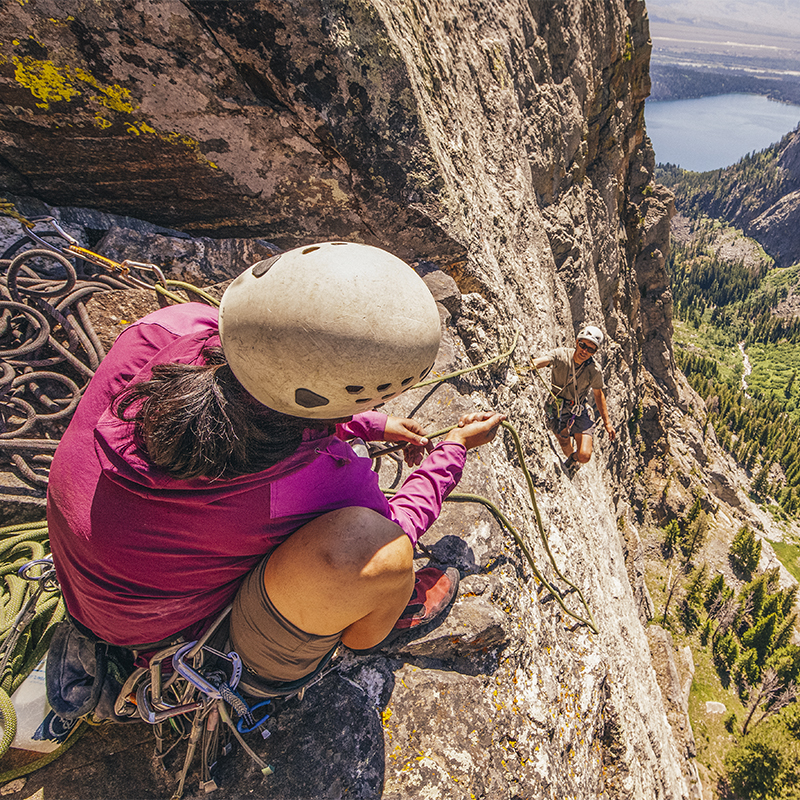But if you’re already up, rigged on a multi-pitch anchor that you’re belaying your climbing partner up to, lowering them isn’t always simple. That’s because assisted-braking devices—like a GriGri or a tube-style device used in guide mode—are designed to lock to the rope, preventing a lower. Disengaging a device in this orientation could cause you to drop your partner.
Because lowering a partner is a common emergency fix—and one with plenty of room for error—it’s one of the best self-rescue skills to have dialed. Here are some common scenarios you might run into:
1. Your partner becomes injured while following you up a multi-pitch climb, and you need to lower them from above.
2. Your follower has fallen and needs to be lowered to the last ledge so they can get back onto the rock.
3. Bad weather starts rolling in and you realize the fastest way to get down is to lower your climber and then rappel after them.
Necessary Equipment and Skills
Fortunately, setting up a lower usually doesn’t take long, and you likely carry all the necessary equipment on your harness already. Here’s what you’ll need to get through the following scenarios.
Essential Gear
- Tube-style belay device with guide mode (or an assisted-braking device like a GriGri)
- 2 locking carabiners
- 1 Hollow Block, Prusik loop, or other material to tie a friction hitch
- 1 20-foot section of cordelette tied in a loop with a double-fisherman’s knot
Basic Skills
- Use a tube-style device in guide mode
- Transfer a load
- Tie an overhand knot
- Tie a Prusik hitch or autoblock hitch
- Tie Münter hitch
- Tie a mule hitch
- Tie a klemheist hitch
How To Lower After a Belay Escape
If you “escaped the belay” to rappel down and check on your follower, your anchor is already set up to lower. Simply follow these steps:
1. Back it up with a friction-hitch.
Add an autoblock or a Prusik knot to your brake strand as a safety backup and clip the hitch to your belay loop with a blocking carabiner. Make sure the hitch is engaged and grabbing the rope.
2. Remove the klemheist.
Untie the friction hitch from your climber’s strand if that’s still in place.
3. Remove the mule overhand.
Grip the brake strand and carefully untie the mule overhand knot that’s keeping your Münter hitch locked in place. Lightly squeeze your friction-hitch backup to disengage it as you lower your climber.






